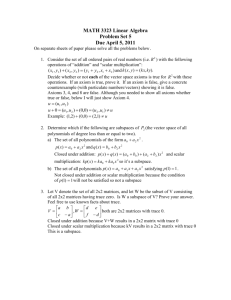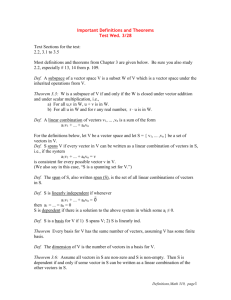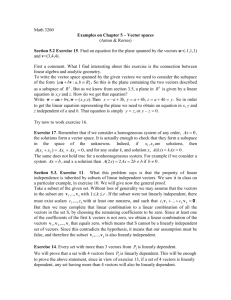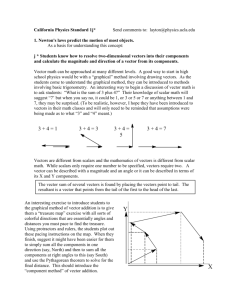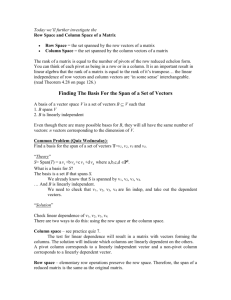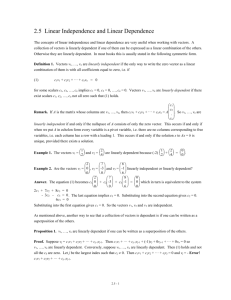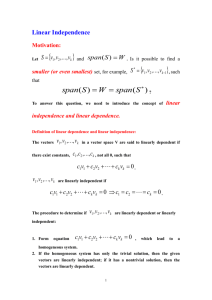Formula Sheet distributed at 3rd Midterm
advertisement
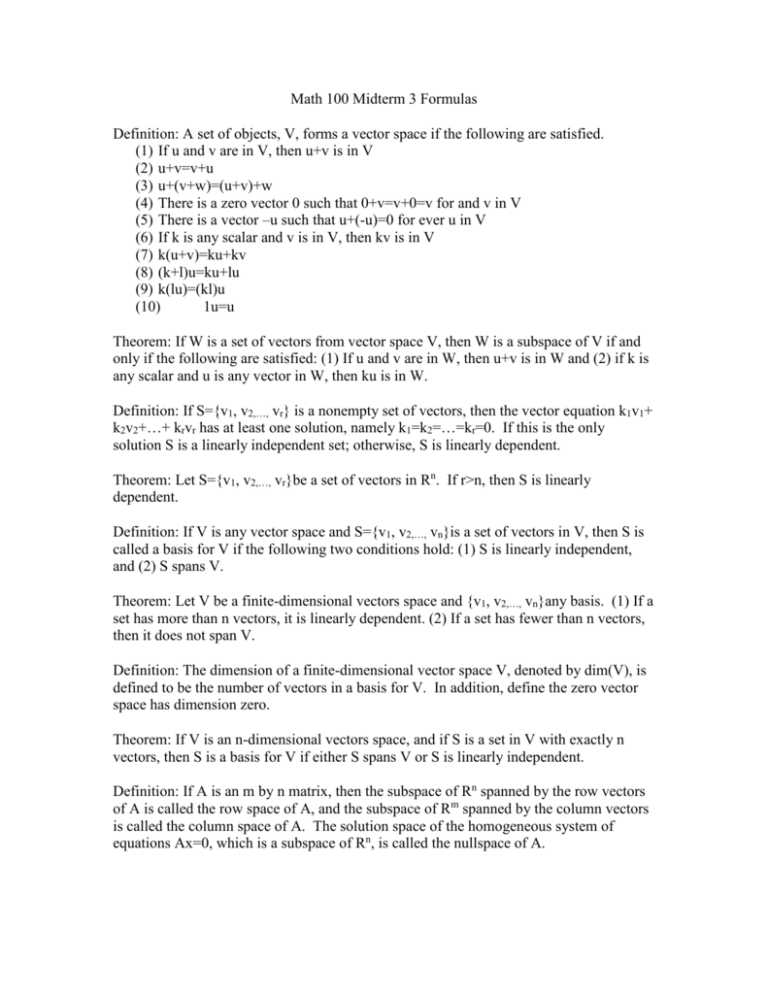
Math 100 Midterm 3 Formulas
Definition: A set of objects, V, forms a vector space if the following are satisfied.
(1) If u and v are in V, then u+v is in V
(2) u+v=v+u
(3) u+(v+w)=(u+v)+w
(4) There is a zero vector 0 such that 0+v=v+0=v for and v in V
(5) There is a vector –u such that u+(-u)=0 for ever u in V
(6) If k is any scalar and v is in V, then kv is in V
(7) k(u+v)=ku+kv
(8) (k+l)u=ku+lu
(9) k(lu)=(kl)u
(10)
1u=u
Theorem: If W is a set of vectors from vector space V, then W is a subspace of V if and
only if the following are satisfied: (1) If u and v are in W, then u+v is in W and (2) if k is
any scalar and u is any vector in W, then ku is in W.
Definition: If S={v1, v2,…, vr} is a nonempty set of vectors, then the vector equation k1v1+
k2v2+…+ krvr has at least one solution, namely k1=k2=…=kr=0. If this is the only
solution S is a linearly independent set; otherwise, S is linearly dependent.
Theorem: Let S={v1, v2,…, vr}be a set of vectors in Rn. If r>n, then S is linearly
dependent.
Definition: If V is any vector space and S={v1, v2,…, vn}is a set of vectors in V, then S is
called a basis for V if the following two conditions hold: (1) S is linearly independent,
and (2) S spans V.
Theorem: Let V be a finite-dimensional vectors space and {v1, v2,…, vn}any basis. (1) If a
set has more than n vectors, it is linearly dependent. (2) If a set has fewer than n vectors,
then it does not span V.
Definition: The dimension of a finite-dimensional vector space V, denoted by dim(V), is
defined to be the number of vectors in a basis for V. In addition, define the zero vector
space has dimension zero.
Theorem: If V is an n-dimensional vectors space, and if S is a set in V with exactly n
vectors, then S is a basis for V if either S spans V or S is linearly independent.
Definition: If A is an m by n matrix, then the subspace of Rn spanned by the row vectors
of A is called the row space of A, and the subspace of Rm spanned by the column vectors
is called the column space of A. The solution space of the homogeneous system of
equations Ax=0, which is a subspace of Rn, is called the nullspace of A.
Theorem: If x0 denotes any single solution of a consistent linear system Ax=b, and if v1,
v2,…, vk form a basis for the nullspace of A, then every solution of Ax=b can be
expressed in the form x=x0+c1v1+ c2v2+…+ ckvk and conversely.
Theorem: If A and B are row equivalent matrices, then: (1) A given set of column vectors
of A is linearly independent if and only if the corresponding column vectors of B are
linearly independent and (2) A given set of column vectors of A forms a basis for the
column space of A if and only if the corresponding column vectors of B form a basis for
the column space of B.
Theorem: If A is any matrix, the row space and column space of A have the same
dimension.
Definition: The common dimension of the row space and column space of a matrix A is
called the rank of A and is denoted by rank(A). The dimension of the nullspace of A is
called the nullity of A and is denoted by nullity(A).
Theorem: If A is a matrix with n columns, rank(A)+nullity(A)=n

